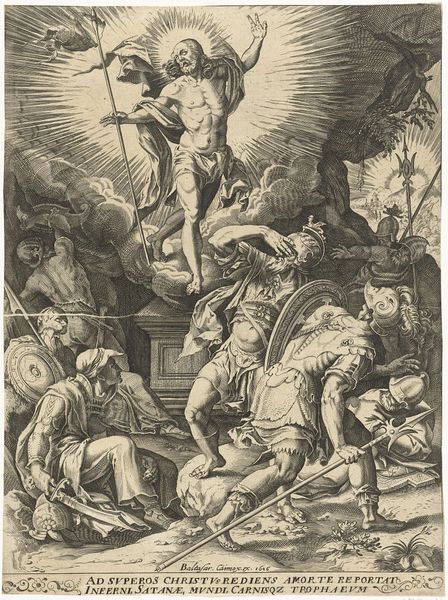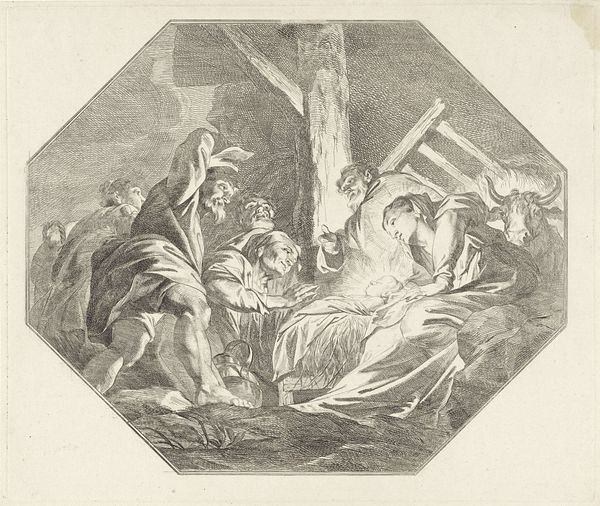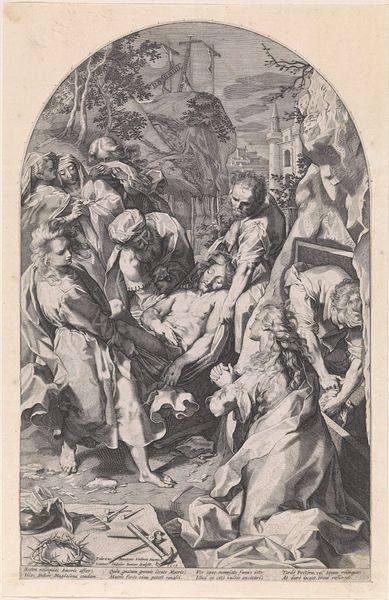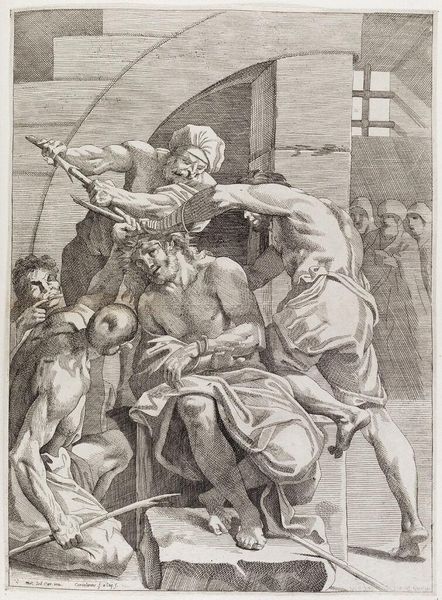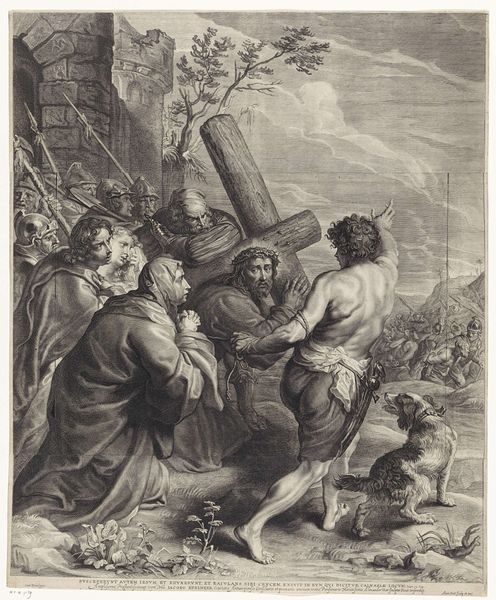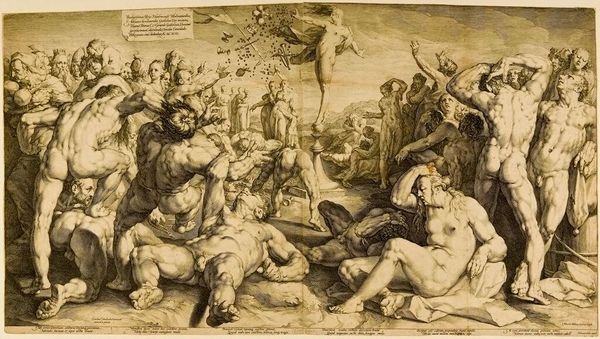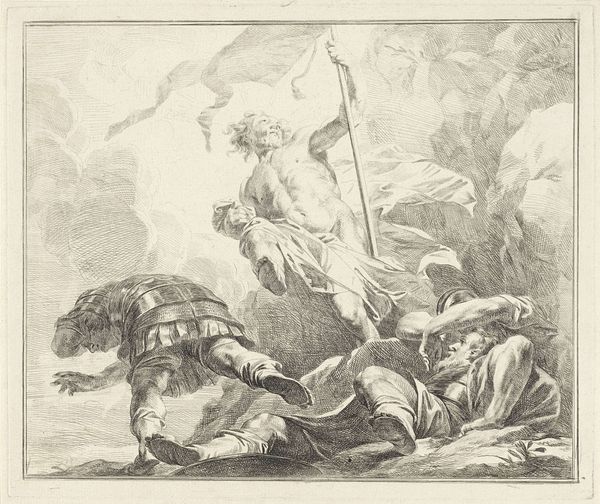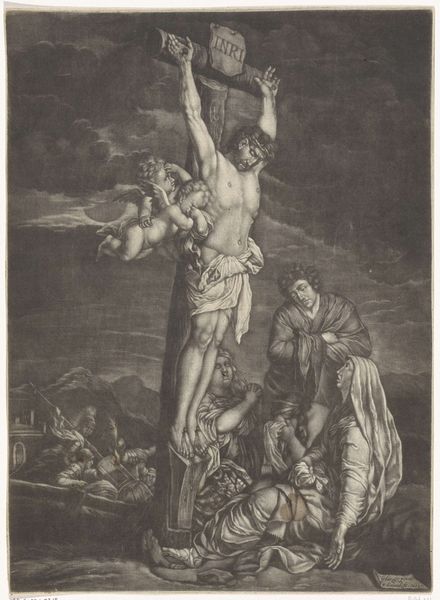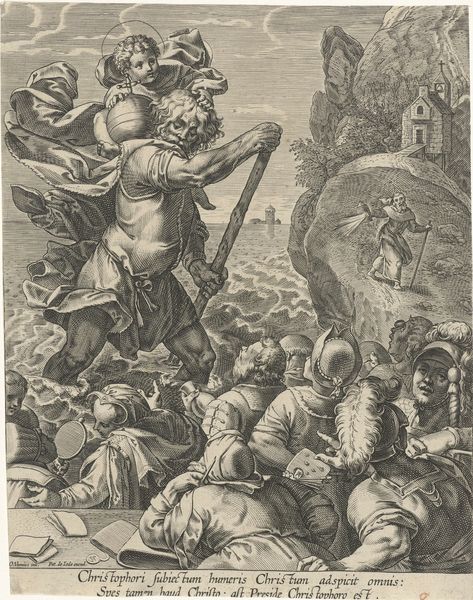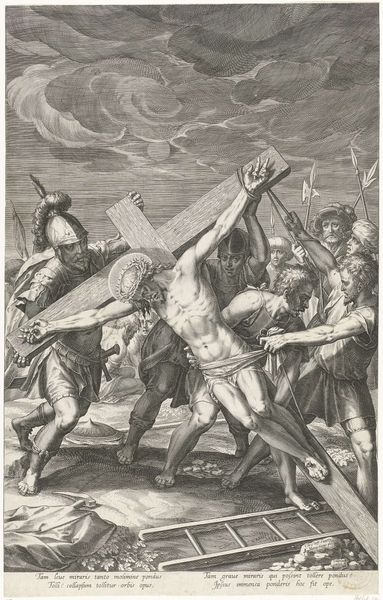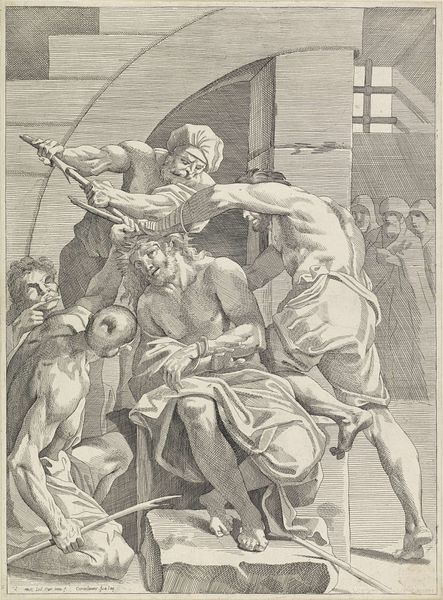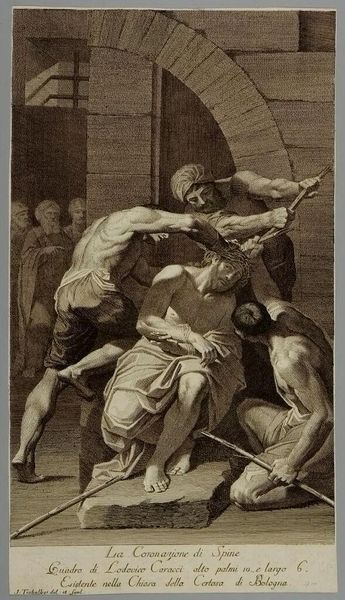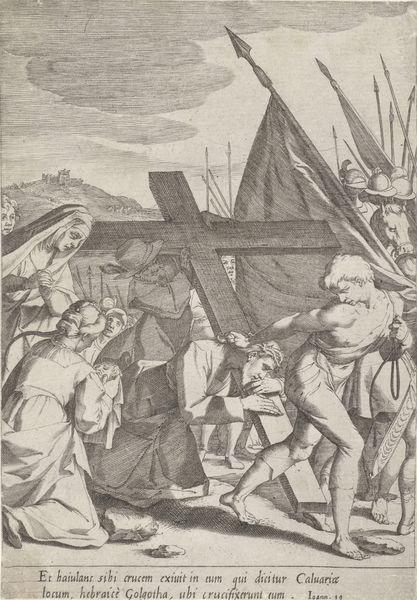
Dimensions: support: 1400 x 2426 x 32 mm frame: 1630 x 2593 x 125 mm
Copyright: CC-BY-NC-ND 4.0 DEED, Photo: Tate
Editor: Francis Hayman’s “See-Saw” is a large, rather chaotic canvas. There are so many figures in disarray. What can you tell me about the social context this painting speaks to? Curator: This piece offers a glimpse into the leisure activities of the 18th century, but it also hints at power dynamics. Who do you think had access to such leisurely pursuits? Editor: Probably only the upper classes, who had the time and resources for recreation, right? Curator: Precisely. And consider the gendered aspects. Notice the women’s reactions. Are they participants or merely observers of the men's antics? How might their roles reflect societal expectations of the time? Editor: That's a great point; they do seem more passive and maybe even fearful. I never thought about it that way. Curator: Thinking about art this way helps us understand not just what was painted, but why and for whom. Editor: Definitely. I'll look at art with a more critical eye now.
Comments
Join the conversation
Join millions of artists and users on Artera today and experience the ultimate creative platform.
tate 5 months ago
⋮
This is one of the few surviving panels painted by Hayman and his assistants between 1738 and 1760 to decorate the supper boxes at Vauxhall Pleasure Gardens. The idea of using Vauxhall for the public display of contemporary paintings was Hogarth’s. To thank him, Vauxhall’s proprietor, Jonathan Tyers, awarded Hogarth with a perpetual free entry ticket. The panels, which took their style from light-hearted decorative French engravings of the 1730s, were one of the great attractions of this fashionable venue and contributed greatly to the spread of French Rococo taste in England. Gallery label, September 2004

